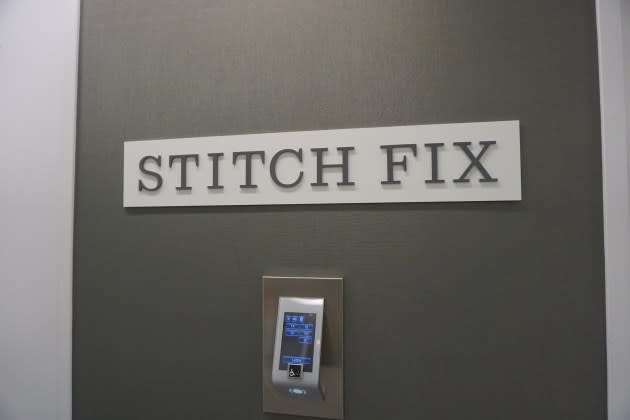Stitch Fix Expects Profitability in Back Half of 2024

Stitch Fix’s first earnings results reported under new chief executive officer Matt Baer tested the CEO, as the online fashion purveyor reported losses for its fiscal fourth quarter that straddled analysts’ projections.
Though revenue of $375.8 million shot past the consensus estimate of $371.24 million, the company posted a loss of 24 cents a share instead of the 21 cents projected. However, when adjusted for restructuring costs, the loss came in at 19 cents a share. That was enough for Wall Street to give shares a brief bump, before tumbling 5.5 percent in after-market trading in the face of a down first-quarter forecast.
More from WWD
But according to Baer, there’s reason to be positive. Artificial intelligence fever may be driving the business world into new territory, but data science is Stitch Fix’s home turf as “personalization algorithms, artificial intelligence, machine learning, and data science are fundamental elements of our model,” he said on an earnings call Monday with analysts.
“It is clear that these capabilities are changing the way companies create and deepen relations with customers — and while they have certainly become popular buzzwords among retailers who are investing heavily to catch up, they have been part of the DNA of Stitch Fix since its inception and something we will build upon going forward.”
David Aufderhaar, chief financial officer, shed more light and context on the numbers. “For [the fourth quarter], our performance was better than we expected and reflects the work we have done to improve gross margin and ‘right-size’ our cost structure,” he said, referring to decisions such as its recent move to wind down its U.K. operations. In August, the company notified employees and expects to finish shuttering that arm of the business before the yearend. Stitch Fix also chose to whittle down its warehouse lineup from five to three.
“We believe the consolidation will have immediate cost savings, and having inventory in fewer warehouses will make it easier for stylists to build more relevant assortments for clients and we will realize inventory efficiencies as we scale,” Aufderhaar explained.
According to Baer, he’s still as enthusiastic as ever about the business model. He characterized his first 90 days in the leadership post as one of observation and learning, and he’s been impressed by the bond customers have with the service, which melds human styling and machine learning. But that doesn’t mean deeper changes aren’t in the offing. The company is analyzing every aspect of the business and its model, he added, and “we are carefully examining what we do and how we do it, optimizing where we can right now while also looking ahead to the longer-term opportunities.”
For the company, macroeconomic pressure bearing down on the consumer has had an obvious impact, and it’s forcing Stitch Fix to reevaluate its unit economics across the assortment and inventory. It’s a scenario that regularly sends retailers into heavy discount mode, but that’s not where Stitch Fix sees its path.
“You know, we don’t have to worry about any price pressures in terms of price checking from consumers,” continued Baer. “And, also, we have the luxury of already having that product into a customer’s home, and as they’re thinking about the assortment, whether they keep it or not … they’re not, you know, actively price-checking that assortment as well. It gives us a unique advantage to be much more of a full-price retailer.”
It apparently sees more tumult ahead before things level out, though, as the company forecasts revenue in the first quarter of 2024 to come in between $355 million and $365 million, versus $402 million anticipated. It also pegs full fiscal-year revenue at $1.3 billion to $1.37 billion, which would fall short of the $1.63 billion expected.
But, at least in regard to earnings, Aufderhaar struck an optimistic note, explaining that “the guide for [the first quarter] was between $2 million and $7 million, and then the guide for the full year was between $5 million and $30 million,” he said, “and so you can see from that, that we actually do expect to be profitable in the back half of the year as well.”
Best of WWD

